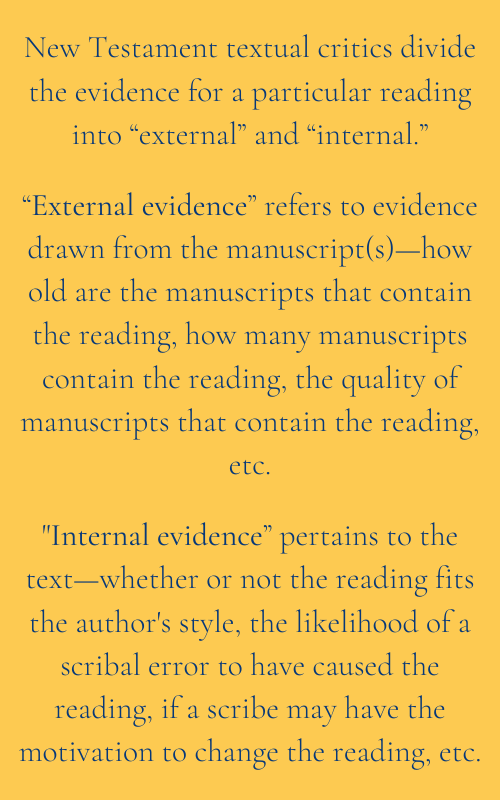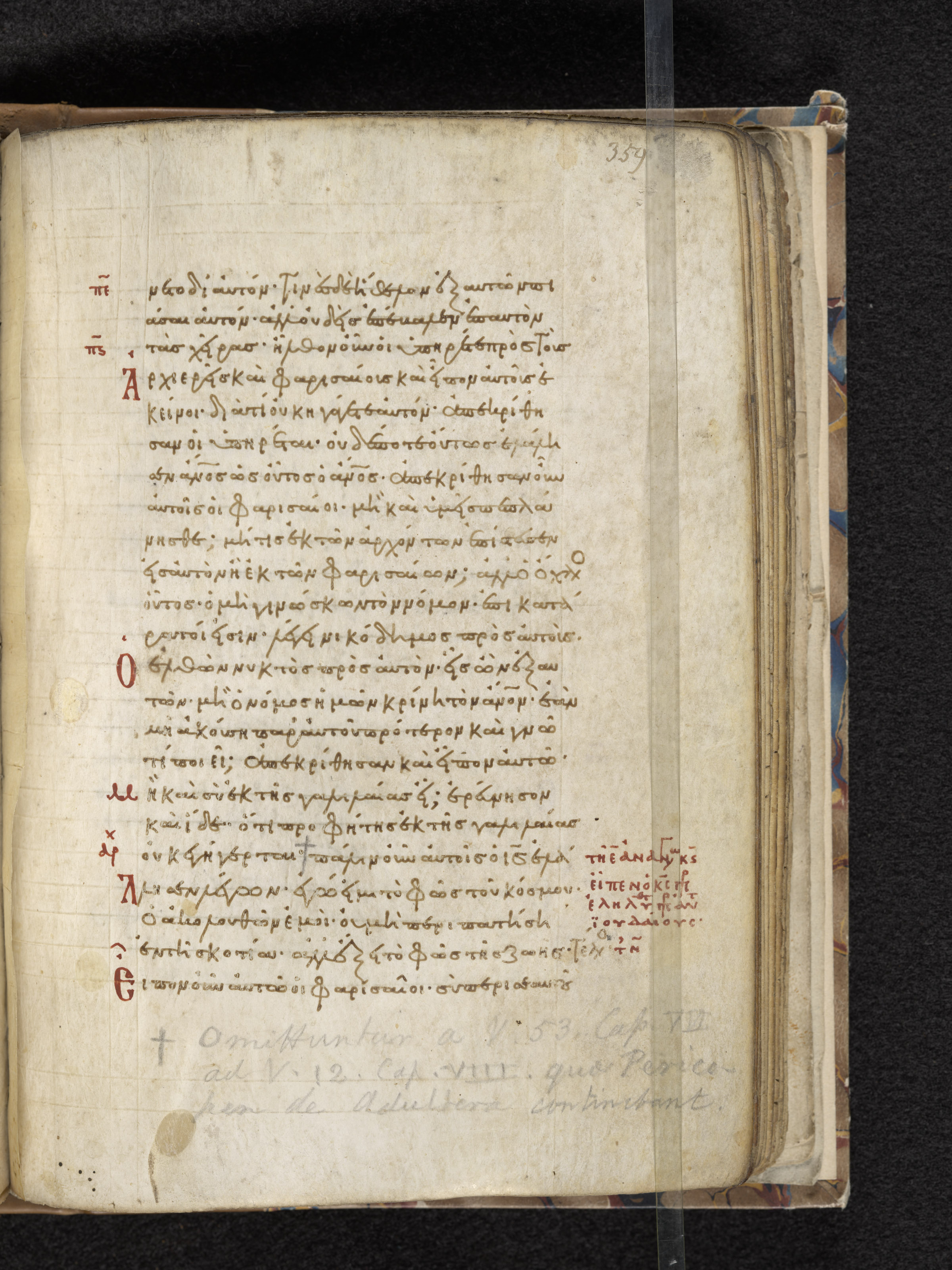By: Tori Andrew
“Jesus stood up straight and said to her, ‘Woman, where are they? Did no one condemn you?’ She replied, ‘No one, Lord.’ And Jesus said, ‘I do not condemn you either. Go, and from now on do not sin anymore.’”
John 8:10–11, NET
I had the pleasure of spending two weeks with CSNTM at Lambeth Palace in London this spring photographing manuscripts in the collection of the Archbishop of Canterbury. Over the course of the expedition, CSNTM digitized over two dozen manuscripts, including GA 471, an 11th century manuscript of the Gospels. The book has several interesting features, including gold-leaf adorned icons of the four Evangelists and two other full-page illustrations. Another notable feature of GA 471 involves something that does not appear in its pages: the story of the woman caught in adultery (John 7:53–8:11).
This passage, also known as the Pericope Adulterae (its Latin title) tells a moving story in which Jesus shows great mercy to a sinful woman brought to him for judgment by Jewish religious leaders who are trying to trap him. In the end, everyone leaves disappointed except the woman who has been rescued and Jesus, who made his object lesson clear: all have sinned and fall short of the glory of God (Romans 3:23). Despite the beauty of the story, and the possibility that it is an historical account that took place during the life and ministry of Jesus, the evidence for the text as it appears in John 7:53–8:11 indicates that this passage does not belong in our Bibles.

It is well documented that the Pericope Adulterae does not appear in any known New Testament manuscript through the fourth century. The oldest known manuscript that includes the story is Codex Bezae (also known as D and GA 05 in the Gregory-Aland numbering system). This 5th century manuscript is known to be especially idiosyncratic, yet deemed important for helping us understand the transmission of the text—particularly in the Latin tradition of the New Testament. By the 8th century, however, most manuscripts contained this passage.
While most later manuscripts include the passage, the placement can vary widely. It has appeared at the end of John, after Luke 21:38, at the end of Luke, after John 7:36, or after John 7:44. Sometimes, the story stands on its own apart from any Gospel. In fact, this pericope moves around the New Testament more than any other. When comparing manuscripts, some passages are known to move around within a chapter, but, besides the Pericope Adulterae, none move from one book to another. The conflicting placement suggests a strong desire to include the story with no consensus on where it belongs.
In GA 471, the text of John skips from 7:52 directly to 8:12, although a modern hand has noted the absence of the passage in pencil (see image below).


The story does not appear in any of the other typical locations. So, we can say confidently that it has been omitted from the manuscript entirely. This is interesting in part because GA 471 is not nearly as old as most of the manuscripts that omit the story, suggesting that its text may have been copied from a much older exemplar.
This is all external evidence that the story does not belong in our New Testament, but an examination of the vocabulary and style of the text (internal evidence) similarly suggests that John did not write these twelve verses. While it feels like a great loss to omit this moving scene from our Bibles, Jesus nevertheless shows mercy to the undeserving (e.g. Mark 9:21–27), stands up to the unrighteous Pharisees (e.g. Matthew 23), and lowers himself to reach his people (e.g. Philippians 2:5–8). The loss of this story doesn’t invalidate the beloved character traits of Jesus found within it. And fair treatment to the human author of the Gospel requires that we not attribute to him what he did not include in his work, no matter how heartwarming the tale.


